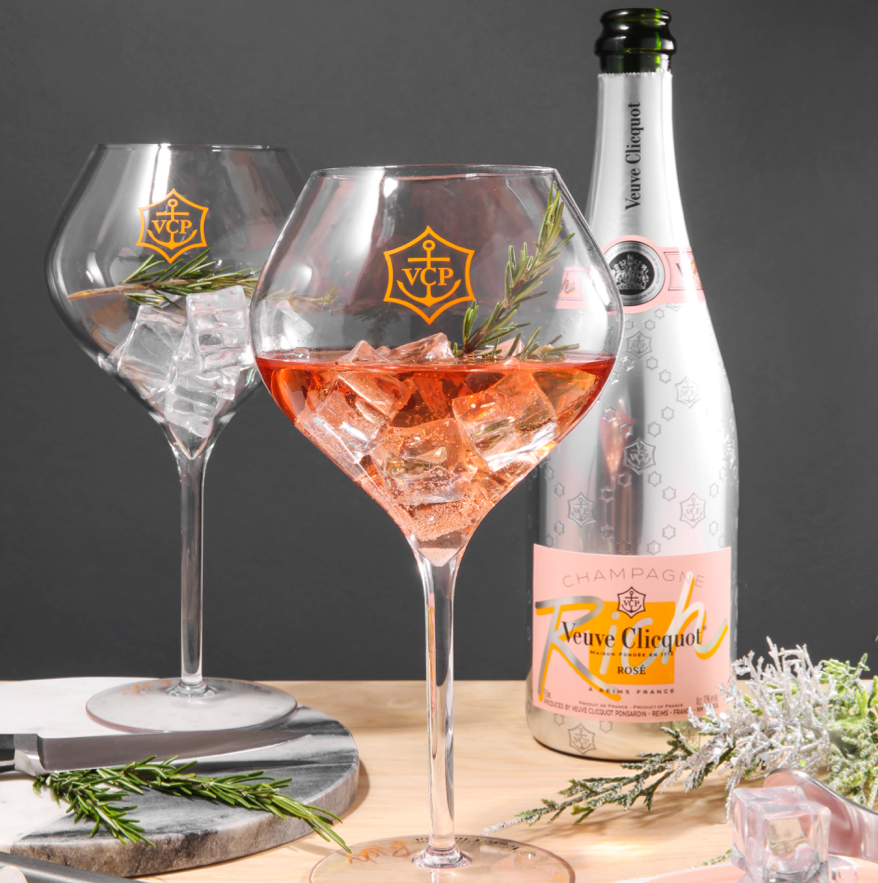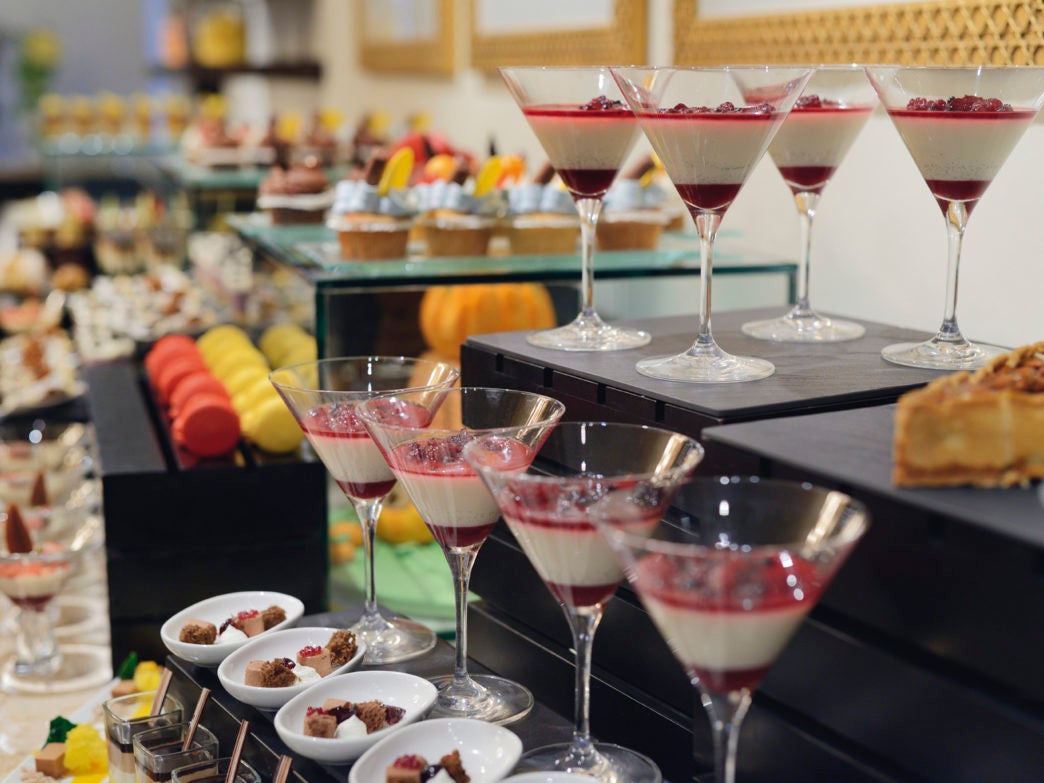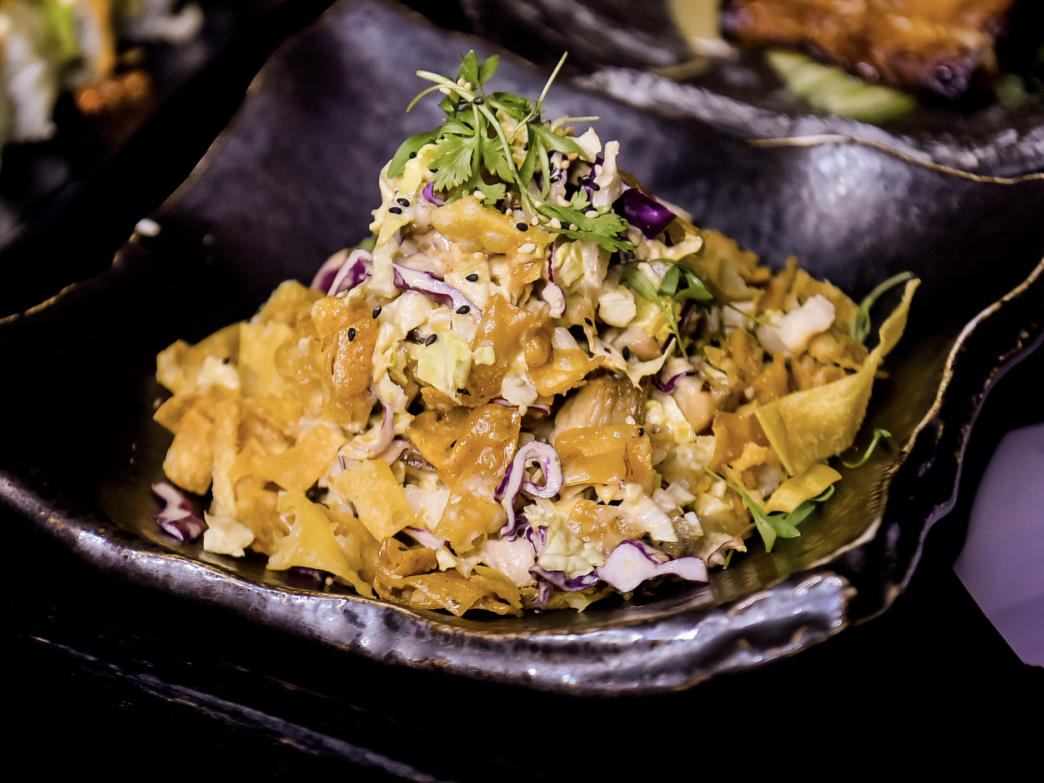
 By Olivia Cuccaro
By Olivia Cuccaro
Clicquot Rich Rosé with Rosemary
To create our cocktail of the week, pour Veuve Clicquot Rich Rosé champagne over several large ice cubes and add fresh sprigs of rosemary.
The most romantic day of the year is around the corner. Everything is pink and sparkling…including our cocktails. We’re celebrating love with the newest expression from Veuve Clicquot— a rosé champagne with a refreshing hint of rosemary that’s an exquisite choice for toasting your valentine.
So what makes rosé special and where does it come from? Elite Traveler’s Olivia Cuccaro speaks with Vanessa Kay, Vice President of Veuve Clicquot USA, about rosé for Valentine’s Day.
Rosé is an established date-night favorite. How did it first come about?
The history of rosé champagne dates back 253 years. In 1764, Ruinart shipped the first bottles of rosé, which they created through a process known as maceration. Maceration involved crushing black-skinned grapes and leaving the skins in contact with the juice for longer than usual, which imbues the champagne with a light pink color.
What was Veuve Clicquot’s role in rosé’s rise to fame?
Madame Clicquot took rosé champagne to new heights in 1818. Often referred to as “the first businesswoman of the modern era,” Madame Clicquot had been widowed at age 17 – becoming Veuve (French for widow) Clicquot – and had boldly taken over her husband’s wine business. Among her many innovations, she created the first blended rosé champagne by adding some red still wine to the existing white wine blend. This new winemaking technique was subsequently adopted for use by all and has since become the industry standard for making rosé champagne.
What makes a superior rosé today?
Quality rosé is all about blend and balance. For example, Veuve Clicquot Rosé draws on a particularly high percentage of reserve wines originating from several harvests (usually five or six): from 25 to 35 percent, sometimes as much as 40 percent to ensure the consistency of the House style. This blend is completed with 12 percent of red wine using red grapes specially grown and selected to give a marvelous balance to this rosé. The reserve wines, some of which are nine years old, are kept separately depending on the origin of the crus [vineyards] and the years in which the wines were produced. Quality, great care, and intentionality begets these fruity, irresistibly pink bubbles.
Why is rosé perfect for Valentine’s Day?
Veuve Clicquot Rich Rosé is the House’s latest innovation and the first champagne in the House inspired by mixology. Available in Blanc and Rosé, Clicquot Rich is best served over ice with fresh ingredients, including lime, grapefruit, cucumber, pepper, as well as rosemary. This simple and refreshing champagne cocktail is the perfect way to toast this Valentine’s Day.

If rosé is the way to their heart, the House of Veuve Clicquot has even dreamed up a few ways to say, spell, or even yell “I love you.” View their gift ideas here. Love is in the air, so raise a glass of rosé and rosemary and have a happy Valentine’s Day.







